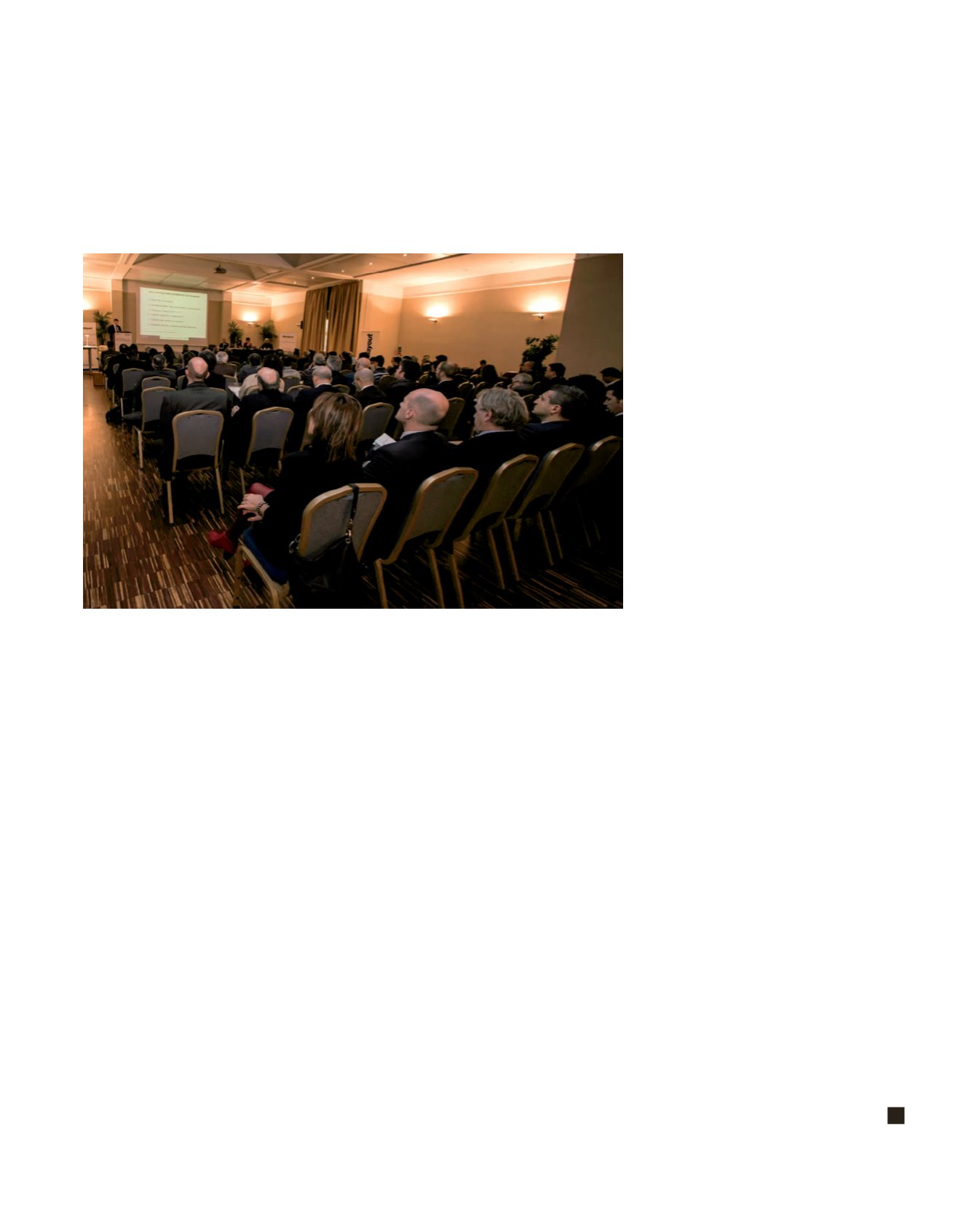
47
Officelayout 156
gennaio-marzo 2014
The Collaborative Office
In Bologna, the second edition of the conference promoted and organized by the magazine Officelayout.
New stimuli on evolutionary factors in the design of office spaces, increasingly marked by zones that can be
used “on demand,” where technologies play a central role
The rethinking of offices spaces is guided, to a
great extent, by data processing and
communications technologies that are leading to
the application of new organizational models
based on internal and external mobility. The
office is no longer the only place where work gets
done, but it is still a crucial node of connection
between the infinite places where people are used
to being productive. Maintaining a central role as
a physical space where ideas and encounters find
fertile ground on which to evolve, but radically
changing its nature.
These are the premises behind the second edition
of the conference “The Collaborative Office”
organized by Officelayout in Bologna on 30
January, which in continuity with the first
appointment in Milan put together the expertise
of protagonists of ICT and the world of the office.
During the one-day conference the sponsors of the
event – Arthur Holm, Durante, Humanscale, IBM,
Panasonic, Plantronics, and Wind – illustrated the
benefits technological solutions and furnishing
solutions can bring to the concept of spaces,
operative activities and building management, for
an audience of architects, organization managers,
human resources professionals and facility
managers. Aspects that take on strategic
importance for the simplification of decision-
making processes, guaranteeing high standards of
quality, safety and security, as was also
emphasized during the round table on facility
management strategies, with the participation of
the facility managers Mauro Poli, Roberto Laureti
and Jari Calcagno, the architect Jacopo Della
Fontana and the professor Bruno Piccoli.
The day began with a talk by Marco Marcatili of
Nomisma that explained how just as was the case
for industry, so too the “factories” of the new
millennium require a new “theory of value”
based on thinking about work modes, the design
of spaces and the needs for collaboration in the
innovative service industries.
“After the binge of worship of individual
performances and the impact of lively
competition, the challenges faced inside
innovative organizations – though in a context of
erosion of faith and a situation of overall
‘unfastening’ – have been oriented towards the
creation of a collaborative office environment,
with the imperative of cooperation, for greater
capacity to construct collective intelligence and
initiative,” Marcantili pointed out. “Nevertheless,
the stock of human and technological capital,
while still necessary, cannot guarantee
organization, exchange, relations. So the need
arises to cultivate a new ‘capital of connection’
inside organizations and workspaces, especially in
the innovative services sector. This capital cannot
be the result of mere opening or sharing of
workspace, which is insufficient on its own to
ensure better results in terms of productivity. It
has in fact been demonstrated that the passage
to shared workspaces has led to an increase in
socialization levels, but at the same time a more
drastic reduction of the time devoted to real
collaboration between colleagues, with clear drops
of performance and a qualitative worsening of
interaction between employees. So to imagine
that the design of open spaces will automatically
trigger collaborative processes is undoubtedly
naive. Just as it is naive to imagine that the use
of more technology will bring about processes of
cooperation. Spaces and technology are part of a
context that requires new organizational formulas
and cultural changes that are much wider
ranging, in order to perceive the effects in terms
of general productivity.”
To conclude, we should underline the success of
the conference in Bologna, with many
participants who expressed great interest in the
themes covered, confirming the correct direction
of the editorial choices of the magazine
Officelayout. As emphasized by Jari Calcagno, a
founding partner of AFMI, Associazione Facility
Managers Italia, in his contribution to the round
table discussion, “for facility managers it
becomes necessary to take another step forward,
to enter further into the specificities of
arguments, approaching problematic issues,
creating more interest. We think the path to take
is the creation of opportunities for training and
information, triggered by the interface of supply
and demand. We are convinced that the
knowledge accumulated by a specialized company
can be useful to give a more pragmatic profile to
training, making it immediately appealing to
facility managers.”


